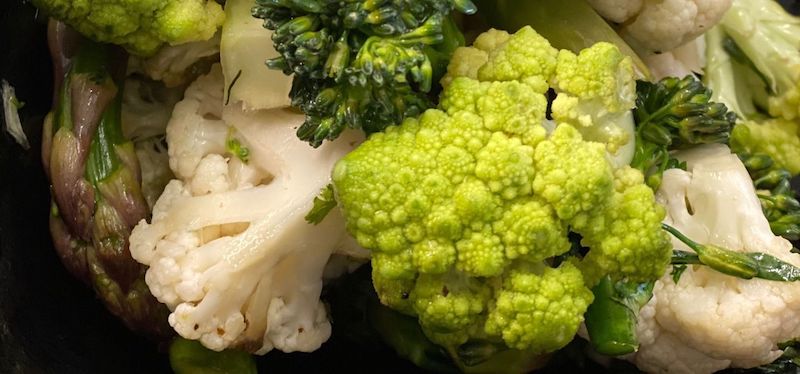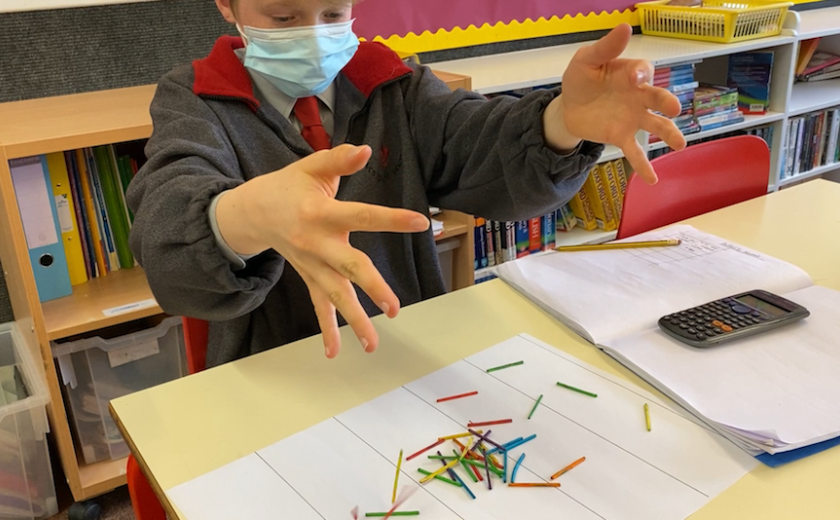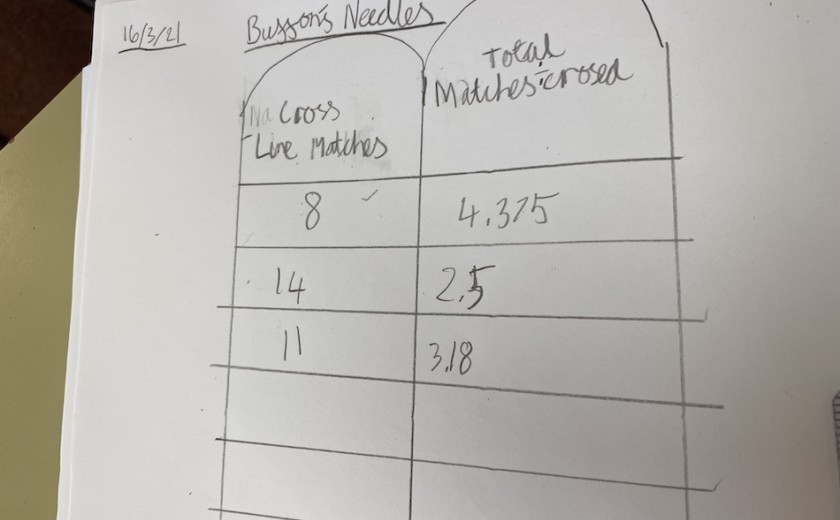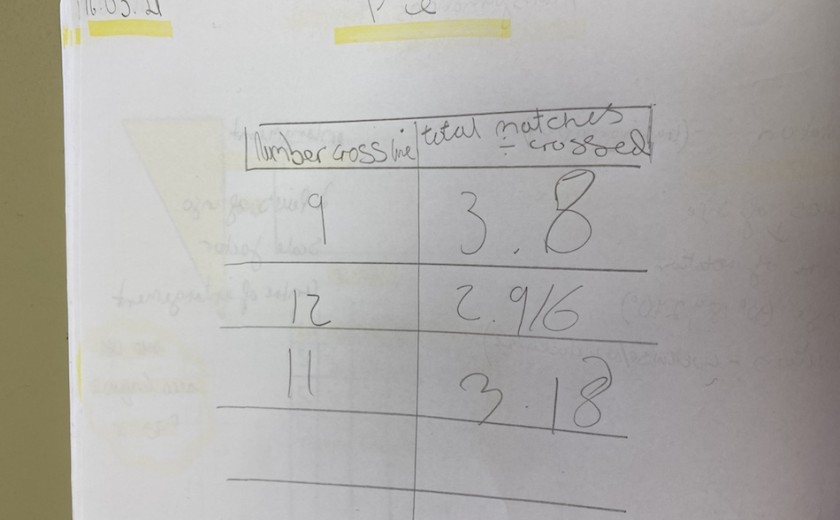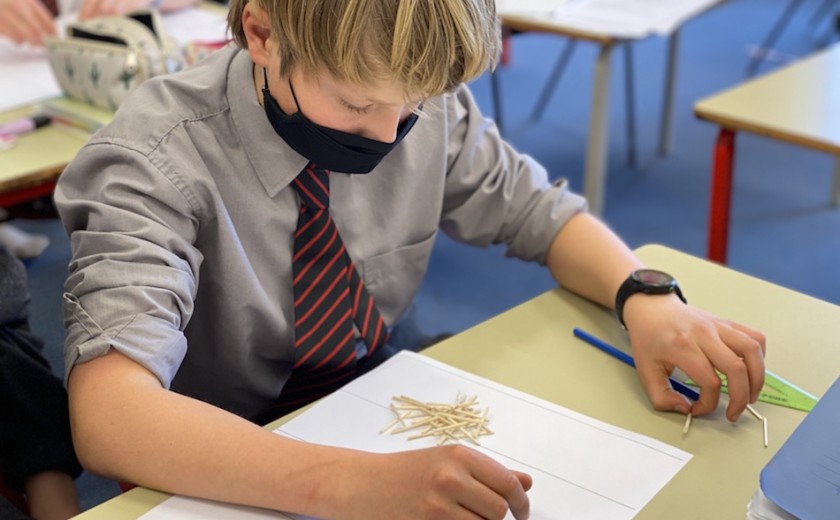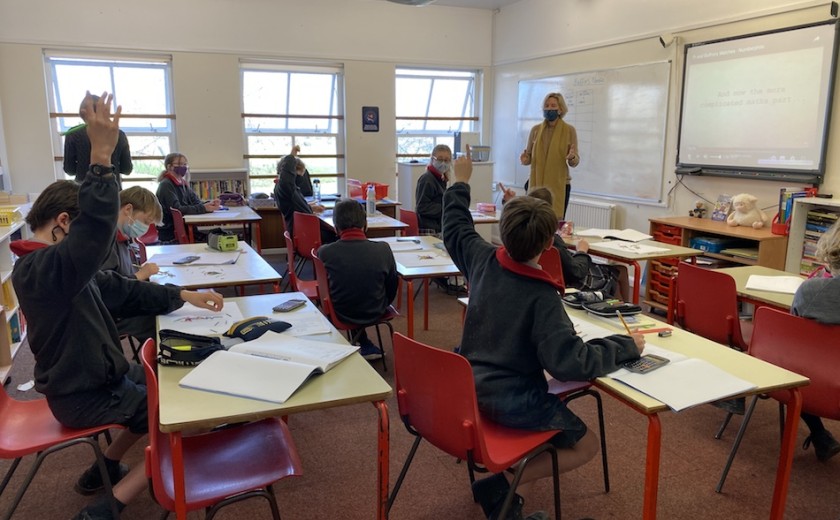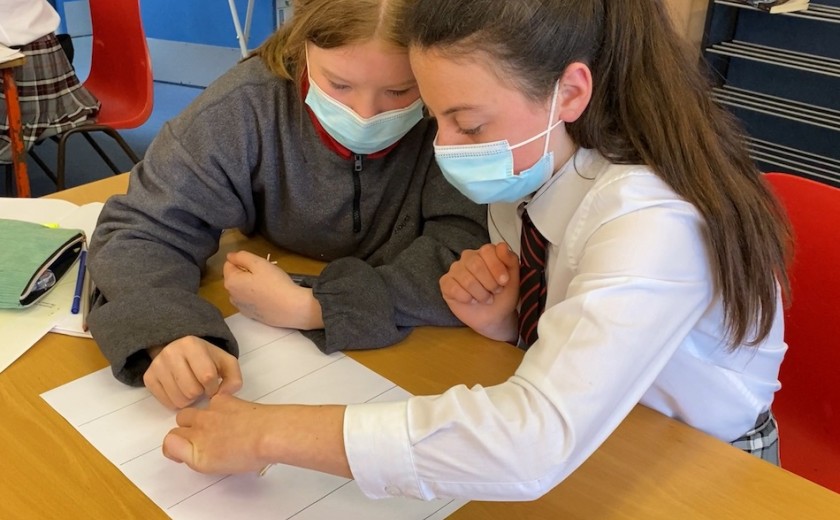Years 7 & 8 have been experimenting to see if an eighteenth-century way to calculate pi (π) based on probability - called Buffon’s Needle - actually works.
Mrs Langford explains: “We decided to recreate the Buffon’s Needle experiment across Years 7 & 8. Just like the French mathematician George Buffon, pupils have been dropping needles, or matchsticks in our case, onto lined paper and carefully counting how many cross the line. The experiment has been repeated several times by each pupil and across all our classes. We have then averaged our result.
"The Westbourne high value came out at 3.21 which is a 2% error on the true value of Pi (3.1415926535)."
Mrs Langford added: "Pi is interesting because it comes up in one of the most famous mathematical equations as well as many, many formulas in maths and physics. Bringing it to our classrooms is purely about the joy of learning and the children were excited to see the average approaching pi."
Pi or π is often rendered as 3.14 — hence the celebration on March 14 (3/14).
In the same week, maths teacher, Mr Allingham, was delighted that a Year 7 pupil correctly noted that he was eating a mathematical lunch: one of the salads was a delicious, crunchy mixture of Romanesco, broccoli and cauliflower. Of course it was the Romanesco that stole the mathematical show, being a perfect example of a natural fractal, and the spirals forming an approximate Fibonacci sequence.
